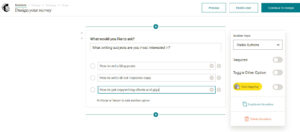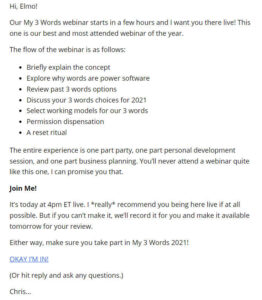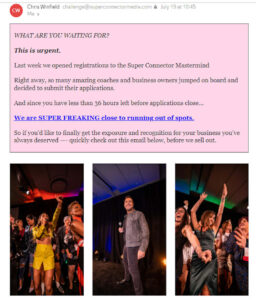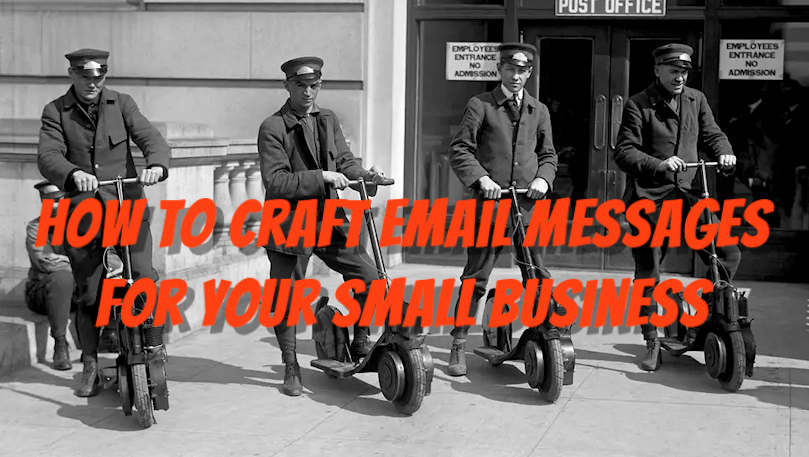Writing an email campaign for a consulting business can be intimidating for business owners. If you have a consulting business, you should consider email marketing because it is a great relationship builder.
People love to do business with service providers that they know, and since consulting is a people business, can you afford to ignore this channel?
Email Campaign Best Practices Stats You Should Not Ignore
Take a look at these email statistics before moving on:
#1 Email Has a Massive Widespread Global Usage
Currently, there are 4.3 billion email users, and this figure will jump to 4.6 billion by 2025. Everyone is using email because it’s cheap and can run 24/7/365 (Statista, 2021).
#2 Over 333 billion Emails Sent Daily
Yes, email usage is that large, and by 2025, there will be over 375 billion emails sent daily. Even though other options available, email is still a behemoth in the marketing realm (Statista, 2021).
#3 Email is Great for Smaller Service Businesses Like Consulting Firms
Email is perfect for creating a more intimate experience for clients or customers. 82% of small businesses still use email as a primary acquisition channel, and 80% use it for retaining their current clients and customers (Emarsys, 2019). You can connect with people on social media, but because email messages are more personal and specific, it still beats the crap out of social media.
#4 The Personal Touch is Important to Consulting Firms
You can personalize all your communications with email. If you have a good email service like Mail Chimp or Constant Contact, you can tailor your messages easily to include your client’s and customer’s names in your communications. If your email subject lines have their names in them chances of them opening those messages increases by 50% (Data Axle, 2019).

How to Start Writing Your First Email Campaign
As you can see, email marketing can help build and maintain your small business or consulting firm’s customer base.
But how do you start using email marketing in your business? Knowing that you need email marketing is one thing, but writing and creating an effective campaign is a different story.
Using our email campaign best practices for businesses method you can get started immediately and increase your company’s bottom line.
Step 1: Assessment
To achieve your objectives, you need to write down everything you know about the product or service you are trying to promote. By answering these questions, you’ll have a good idea of what you need to write.
If you already have marketing assets like brochures, commercial scripts, website copy, advertisements, etc., you can use them to help you answer some of these questions.
Question 1: What are you trying to accomplish with this campaign?
- What kind of results do you want to achieve or accomplish?
- Are you trying to promote a book or a one-on-one session?
- Do you want to get more leads and sales?
- Do you want to build relationships with your prospects, customers, and clients?
- Are you making a special offer?
Question 2: Do you already have marketing assets to support your goal?
If you have any of the following about the products or services you are trying to promote, pull them out. You can extract many ideas and information from them, especially if they were professionally written.
- Do you have a whitepaper on this subject?
- Webpages already written?
- Advertising copy?
- Brochures?
- Radio Scripts?
- Course materials?
- Previous email campaign(s)?
Question 3: Who is your target audience?
Knowing your target audience is very important. One email campaign best practices is to figure out who your target audience is by creating a customer persona. If you are using Google Analytics or one of the more sophisticated email platforms, you can activate the demographics collection services.
Google Analytics is easy to install on your web pages and can give you demographics on visitors who come to your site. Stats on age, gender, interests, language, and location are just a few of the stats it can deliver to you. Also, you can find out who your target market is by using tools inside of one of the email services you use. If you have been selling products from email campaigns, Mail Chimp, Aweber, and Constant Contact will give you the demographics you need to complete your client or customer persona.
Use Surveys
Another way for you to get information is by sending out surveys in your email. The company I use, MailChimp, has a survey creator you can use to help build your customer persona. Mail Chimp makes it easy to create surveys and will help you form your email best practices personas.

Email Campaign Best Practices – Other Important Questions
If you want to ensure that you are ready for your email campaign, you can get a copy of Guerrilla Marketing in 30 Days by Jay Levinson. He has a massive section in this book that gives you more questions you should answer about your clients and customers.
Here is a short list of ideas you should consider:
- Who are your competitors?
- What problem does the target audience have that your product solves?
- Why would your prospects think your products or services would help them?
- How or what makes you better than the competition?
- What kind of free content would hold your audience’s interest?
These are a few ideas, but each consultancy or business has a different client base and should consider questions unique to their business.
Tip: A Good Idea on How to Use Longer Content
Most of my blog posts are between 2000 to 5000 words. If I posted content of that length into an email message, my readers would trash it.
Instead, I usually write a short email message telling my readers about my blog post and how reading it will benefit their lives.
Basically, a message of this nature keeps me inside of my subscriber’s minds. If they get regular email from me, they will remember me better, so the more reasons why I can keep in touch with my readers, the better.
There are a couple of ways you can do this:
First, give them a brief description of your post and write a sentence or two of why they should read it.
Second, give bullet statements telling them the highlights of the post.
Finally, write a call to action and give your readers a link to the post.
Here is an example of one of those email messages:

This method will enable you to stay in touch with your subscribers while getting more traffic to your blog posts.
How to Start Writing Your Email Messages
When some people start writing their email messages, they think they need to outline. However, this is not necessary because emails should not be long because busy people won’t read long emails.
Considering how many emails the average person gets every day, they are usually tired from sifting through them all before they get to yours.
Short email messages with bullet points in them get read more. The reason why a lot of good companies do this is that they know people scan messages online.
Here is an example of an effective email from the famous marketer Chris Brogan:

This is an example of Chris promoting his webinar. You’ll notice it is not long copy like many long-form direct response letters.
Here is an outline of his email:
- Greeting
- Webinar Reminder
- Contents of Webinar (Bullet Points)
- Segmentation of Webinar
- Call to Action
As you can see, this isn’t a 3000-word post but a concise and easily scannable message.
When You Should Plan Your Email Messages
One of the email campaign best practices you should do is plan your emails when sending a series. When writing a group of email messages with a targeted reason, you want to play them out.
I’m not talking about how to write each email but how the overall series should be structured.
For example, here is a list of 4 email subject lines from a famous blogger.
Email 1:
INVITATION: Get my whole niche library (and 12 months of training)
Email 2:
The only blogging course you need. Seriously
Email 3:
A Sneak Peek Inside My Blogging Course
Email 4:
Your $1000 discount expires today
Of course, this was a planned email series dedicated to selling you a blogging course. Each email message dovetailed with the next one seamlessly.
Some posts by the same author didn’t sell anything but gave you valuable information to keep you reading his material.
Subject Line:
New Post: How to Write a Pitch
This email was short and redirected you to his blog post.
When planning a series of emails with a specific mission behind each one, you should plan them out. If you think through the process before writing, it will make your series more compelling.
There are about eight different content strategies for writing email messages.

The Great Eight Email Content Strategies
#1 The Direct Pitch
This is a content strategy where you are selling something like a product or a service. A direct pitch can be a single email or multiple emails. If you look at my email subject lines above, the marketer used four email messages over a week.
Usually, something is offered for taking action, like a free webinar, white paper, counseling session, or discount for an event.
These emails follow a predictable format and use elements of direct response copywriting.

#2 The Storytelling Email
You can tell stories in email messages, because they are essential to captivating readers. You usually see them in blog posts, but you can also use them in email messages.
One of the reasons why storytelling is so important is because they affect readers on an emotional level. Emotions can drive people to do many things, like taking action to buy a service or product.
#3 Education Messages
Giving away free tips, lessons, or advice is a way to keep your reader’s interest. If you want to generate some ideas on how to do this, stop by your local book store and look at the magazine rack. You will see a lot of magazines with all kinds of how-to headlines on them.
Here are a few from Success Magazine:
- 21 Top Sales Performers Share Their Secrets
- Become Your Own Publicist – Free DIY Tools
- Breakthrough Advice from an Expert Coach
- Turn Followers into Buyers
- Starting From Scratch – How to Choose Your Goals
Whenever you are teaching, you are selling. This is why so many marketers believe in the power of giving away free information.
For example, if I told potential clients exactly what I do to write a sales letter, 99.5% of them would throw their hands into the air and say, “Forget it!” The process of writing one is not simple or easy.
It would be much easier and less time-consuming to hire a copywriter.
#4 Building on Past Emails
This is a series of emails where you are continuing a conversation.
These messages can be sent over days, weeks, or months.
You can start the emails where you briefly remind your subscribers what you covered in previous email messages.
Here is an example:
Dear Jolene,
If you remember the email I sent you several days ago, we covered how to write the headline and sub-headlines for your blog posts. Now we’ll continue our series by talking about how to write your blog post’s introduction.
That example is what and introduction to those kinds of emails look like. Once again, while you are telling you are selling or building your credibility.
#5 Zeroing in Emails
The Zeroing In messages are where you focus on a specific feature of a service or product you are promoting. You can do this as a part of a series.
Software companies use this format quite a bit. They will tell you all about their products in a series, and then on the fourth or fifth email they will zoom in on a specific feature.
Example from System Mechanic Software:
On-Demand Boost
Jump into full throttle power sessions in one click with On-Demand Boost. Easily suspend non-critical, currently running Windows® services that could be draining precious system resources. On-Demand Boost is perfect for gaming, rendering video, and other resource-intensive tasks. Combine this with the power of System Mechanic’s Network and Process scanners for a maximum performance experience.
Click Here to Give it a Try…
#6 Multi-Lesson Content
This email campaign best practices method is where you create an email series where you take content and break it up into different segments for your readers.
Email 1 – How to Write a Blog Post Overview
Email 2 – How to Research Your Post and Make an Outline
Email 3 – Let’s Focus on Writing Your Headline
Email 4 – Planning your Sub-Headlines
Etc.
#7 Newsworthy Emails
Once again, this kind of email keeps you in the minds of your readers. It shares newsworthy events that are relevant to your industry. I got this email from a jewelry company:
TOP 10 JULY STORIES: The most-read industry articles this month
This is just another way to keep your email subscribers engaged while letting them know you are on top of your industry.
#8 Personal Life Messages
As I’ve mentioned before, people like doing business with people they trust and respect. One way to do that within your email strategy is to let them into your personal world.
I know one copywriter who is traveling across the country in a van. She takes pictures and writes about her experiences on the road with her family. She also talks about the challenges of being a busy copywriter while traveling.
I know you’re probably rolling your eyes about this, but letting people into your world and showing them pictures is very powerful in email marketing, especially when you combine your personal life with your business.
Conclusion
These are some of the different ways you can use email marketing best practices to get your email campaign up and running. Once you learn how to write compelling stories, lessons, and direct sales messages, you’ll be able to churn out an effective email campaign.
Have any other ideas about writing email messages? Please leave them in the comment boxes below. We’d love to hear what you think.

